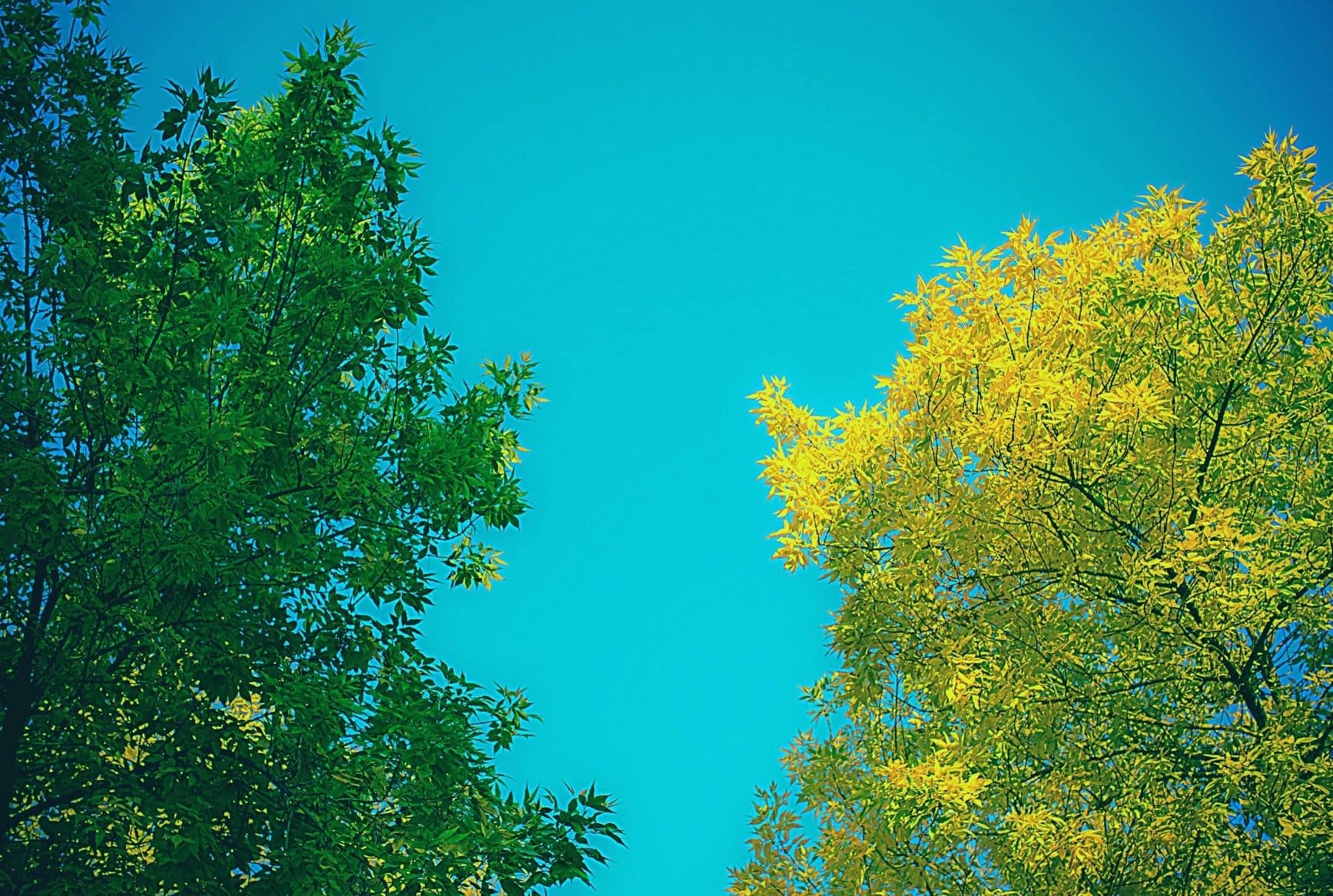

Growing up in Vermont, the changing of the seasons set the pace of the year.
If you’re from Vermont you might have heard the joke that the state experiences many seasons. In addition to the traditional spring, summer, winter, and fall, we also had mud season, black fly season, sugaring season, fiddlehead season and more!
Each of these seasons was a part of the yearly cycle, and while they returned each year, each was ephemeral lasting only a few days, weeks, or months.
Reflecting back, these ever changing seasons taught me so much about being present in the moment and experiencing gratitude for each new experience as they came around.
Just as in last week’s post on honoring the monthly cycles in your life, there’s a balance achieved by honoring natures cycles throughout the year. By dancing with the seasons (not struggling against them), we’re able to honor the inner wisdom asking us to follow a balancing process on a larger scale throughout the year.
Winter
During the winter we draw inward. For many inhabitants of the natural world, this is a time to conserve energy. A time of hibernation or semi-hibernation.
Think of the hush in the world when you wake up early in the morning after a snowfall. The blanket of white seems to quiet the world. And if you’re anything like me, you may feel compelled to stay under your own blanket, snug inside a nice warm house.
Winter is a time to reflect inward, and to create an environment that brings a glow of warmth to your life (fill your life with all things hygge).
This is an ideal time to make sure you’re getting both self-work and self-care in equal measure (read more about the difference between these two and how to ensure you’re getting a balance of them here.
Given the introspective nature of winter, the self-work is often much more mental and emotional than physical. It’s all about thinking, processing, feeling, and releasing.
Spring
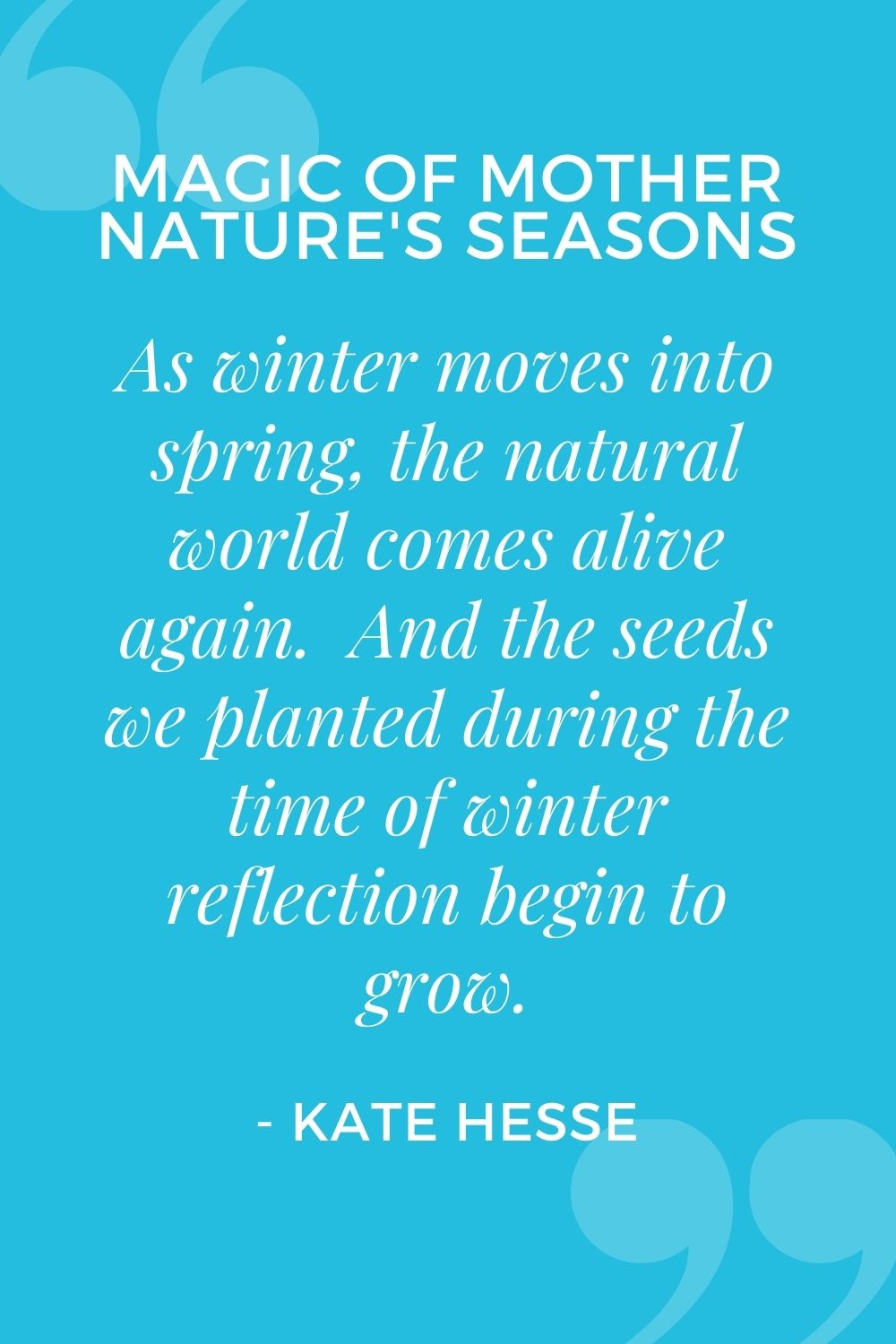 As winter moves into spring, the world begins to return to life.
As winter moves into spring, the world begins to return to life.
Plants grow, leaves return to trees, flowers begin to emerge. Animals which have been hibernating or who migrated to warmer climes begin to return.
And for us, the seeds we planted during the time of winter reflection begin to grow as well.
In spring, we often want to spend more time out of the house, experiencing all the fresh newness of this season.
I find myself doing much more self-work than self-care during the spring as I’m invigorated with the energy of this season of growth.
Summer
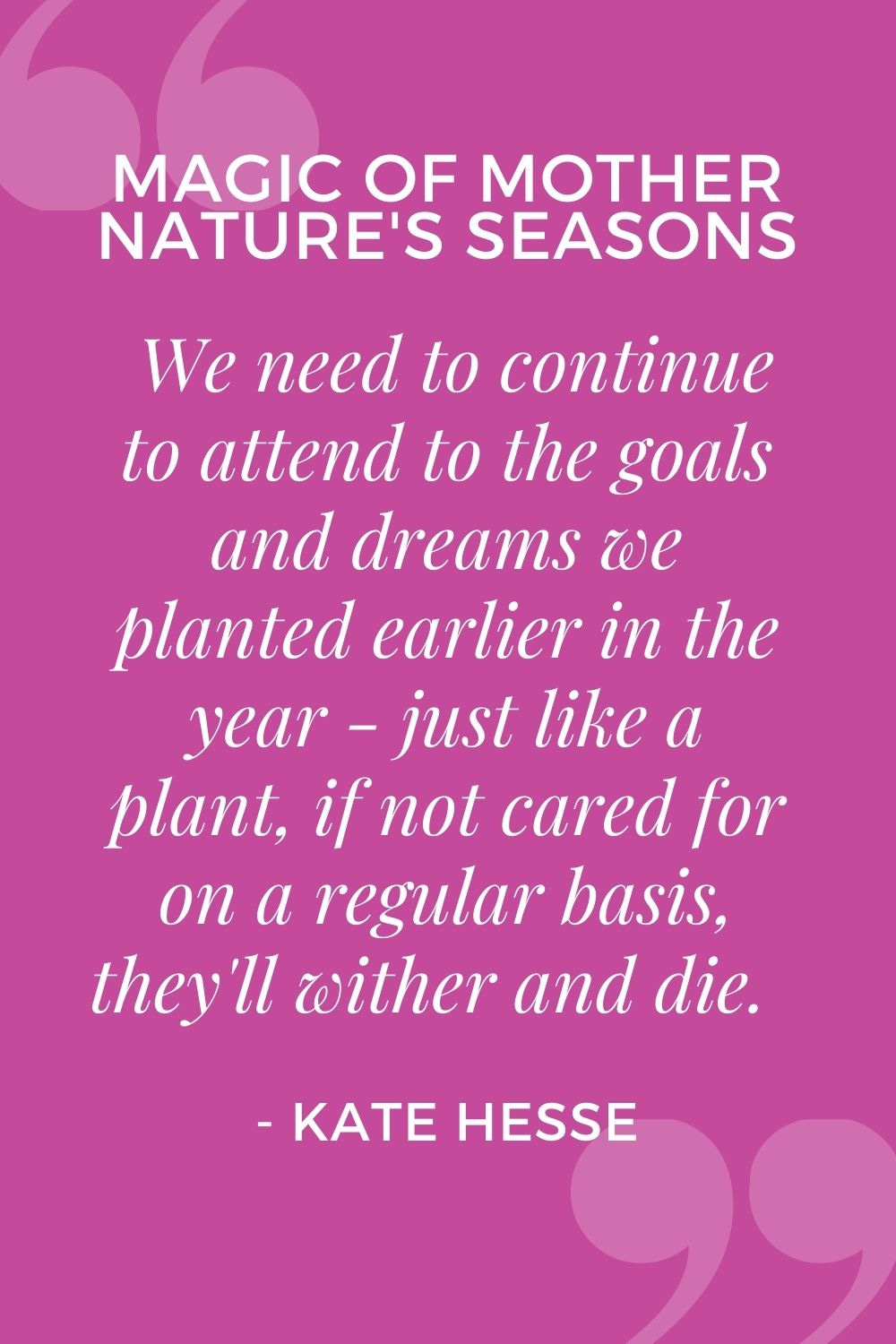 Spring turns into summer, and suddenly the sun which in the spring brought everything to life, is now more likely to roast anything (plant and animal alike) which stays in its path a little too long.
Spring turns into summer, and suddenly the sun which in the spring brought everything to life, is now more likely to roast anything (plant and animal alike) which stays in its path a little too long.
I discovered the importance of summer nights when living in Arizona. Once the sun set, the ground still radiated the heat of the summer sun but was instead bathed in the softer light of moon and stars (and also a lot of street, house, and yard lights as well).
During the summer if we keep watering and fertilizing the seeds we planted in the spring they’ll continue to grow and flourish. But we need to continue to attend to them – just like any other plant, if not cared for on a daily basis, they’ll wither in the summer sun.
During the summer I again find my way back to a balance between self-work and self-care. I continue to focus on growth, but also need to replenish my energy which can be sapped by the heat of summer (think of how tired you are after a day at the beach even if you do nothing more than lay in the sun).
In contrast to winter, self-work during the summer is physical – it’s about doing and creating. Summer is a time for channeling the energy from the long days and the bright sun into fuel to help the seeds you planted in the winter grow and flourish.
Autumn
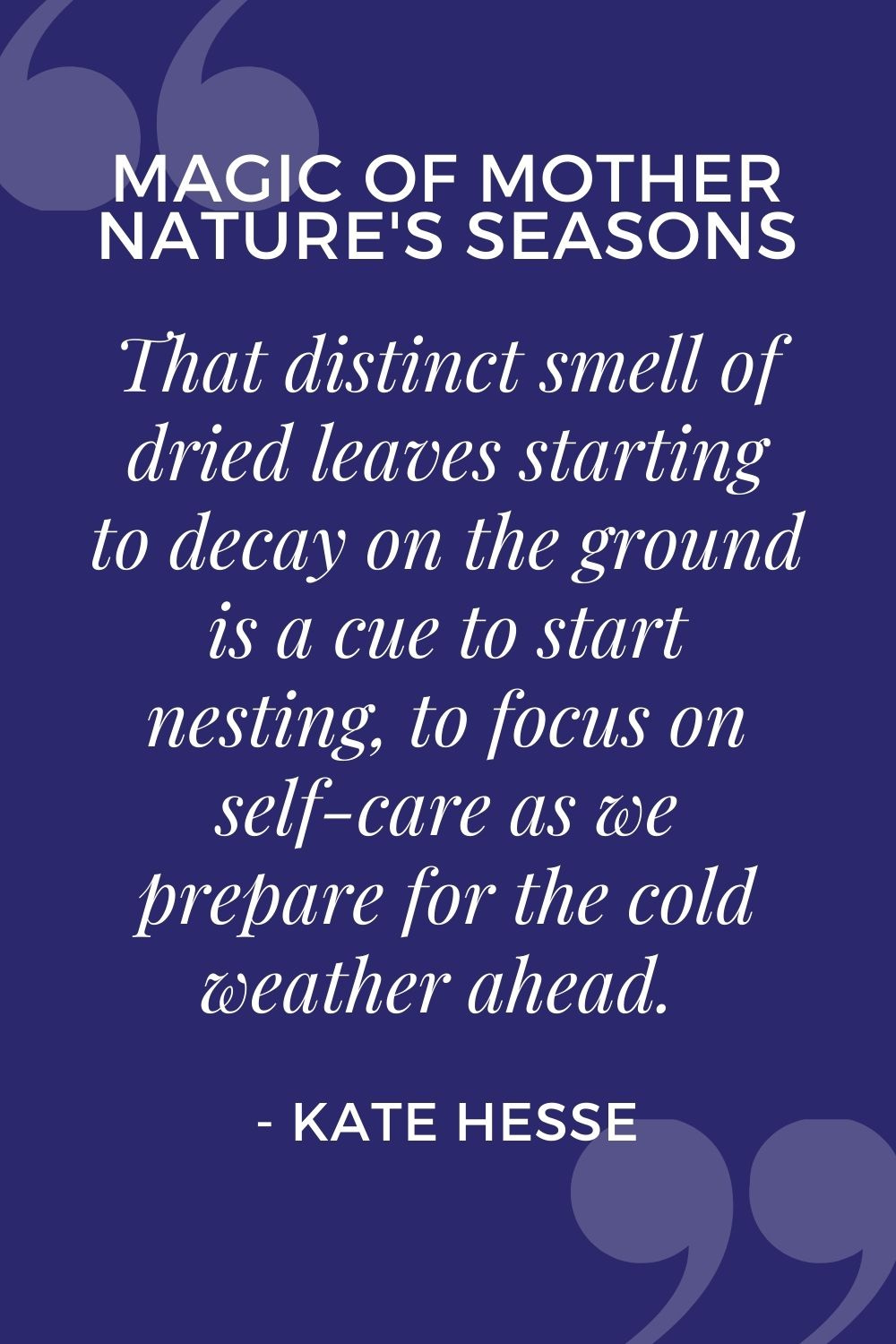 As summer nights begin to cool, autumn moves in. Autumn ushers in not only cooler temperatures, but also sees plants start to die back and animals begin to migrate south.
As summer nights begin to cool, autumn moves in. Autumn ushers in not only cooler temperatures, but also sees plants start to die back and animals begin to migrate south.
It’s the harvest season, when we reap what we planted in the spring and worked so hard to keep alive and flourishing throughout the summer.
As mother earth prepares to go to sleep in advance of winter, leaves turn brilliant colors and fall off of trees.
If you’ve ever lived in a temperate region, you know that distinct smell of dried leaves starting to decay on the ground. For me, it’s a smell that cues me to start nesting, to focus on my self-care as I prepare myself for the cold winter ahead.
And then the snow starts, and fall turns into winter, and the cycle begins again.
Finding the rhythm of the cycle
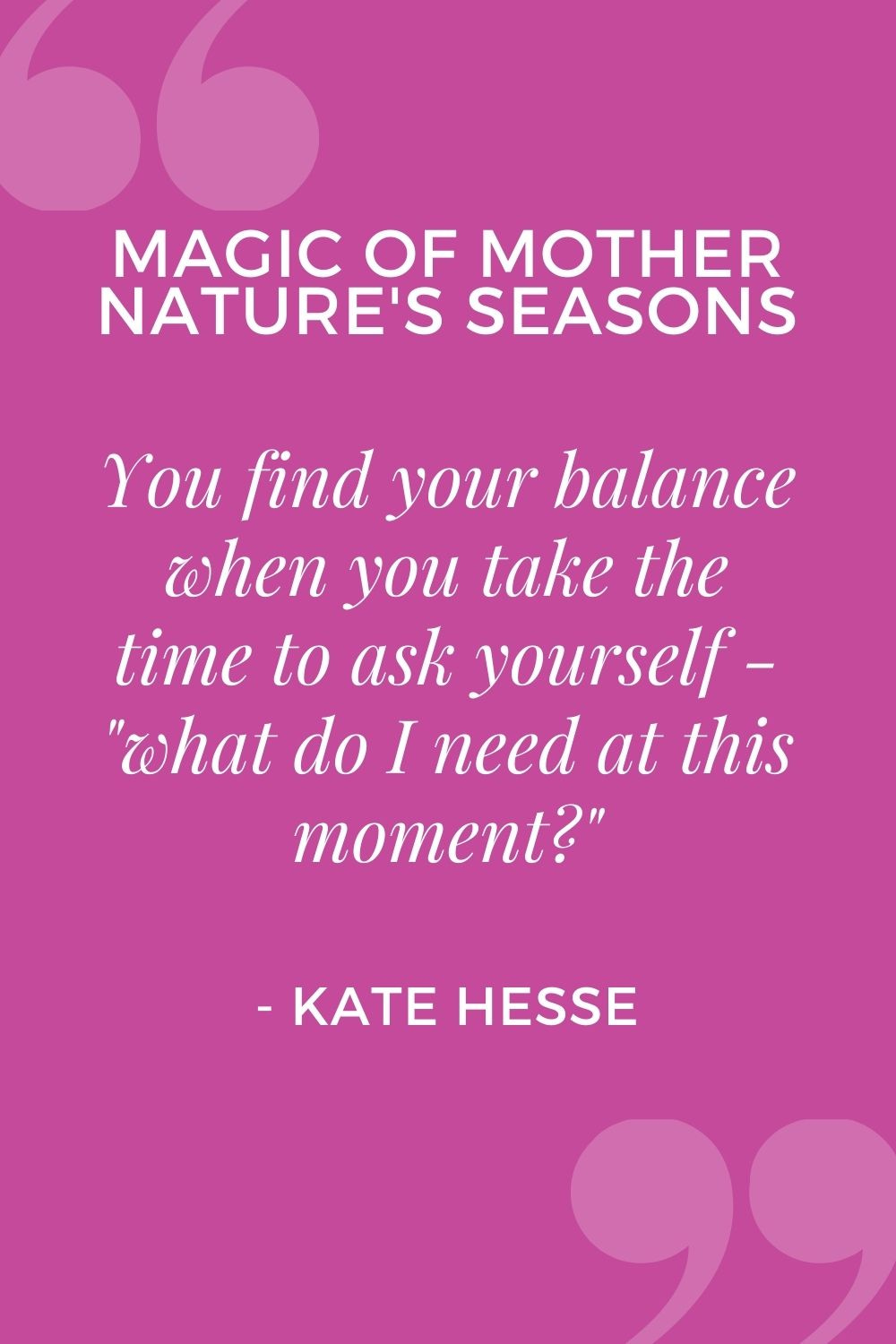 While I’ve offered suggestions for where you might want to focus your time and energy during each season, this will be incredibly personal based on who you are, what season of life you’re in, and where you live. But by tuning into the balance and rhythm of nature, we’re able to find a balance in ourselves.
While I’ve offered suggestions for where you might want to focus your time and energy during each season, this will be incredibly personal based on who you are, what season of life you’re in, and where you live. But by tuning into the balance and rhythm of nature, we’re able to find a balance in ourselves.
When I lived in Arizona nature presented different seasons – a different cycle – and I struggled to find the rhythm. I didn’t move as gracefully between seasons as I have before (and have since). And it finally occurred to me that I felt off because I was treating nearly nine months each year as summer.
Living in constant summer isn’t sustainable
Think about places where mother nature actually provides summer like weather all year. Those are the cultures that embrace a siesta.
They don’t move through four cycles a year the way one would in a temperate climate, rather, they develop other techniques and routines to find their balance.
The goal of harmonizing with the seasons isn’t about doing winter things in winter or summer things in summer, rather, it’s about using nature as a reminder that we need to have a time to create and a time to slow down and contemplate.
In the western world, we tend to focus on the doing and creating as the goal. But without the time to recharge we end up burnt out. And without the time to reflect our doing is more chaotic and less clearly aligned to a desired goal or outcome.
Finding YOUR balance
When we get out of sync with nature, it’s even more important to listen to our inner wisdom. To turn to the voice inside and ask it “what season am I in?” (regardless of what mother nature is presenting).
You find your balance when you take the time to ask yourself – “what do I need at this moment?”.
Perhaps you’ve spent so much time trying to push through life that your well is now empty, dried out by the constant summer sun. Maybe you need to allow yourself to nest and focus on self-care (regardless of the month on the calendar) to recharge and re-energize.
You might find your seasons are not all exactly four months each, and in any given year you may need to spend more time in one season or another.
What’s most important isn’t that you’re channeling summer energy in summer, but rather that you tune in through mindfulness, meditation (guided or otherwise), breathwork, asana, journaling, or any other technique which helps you quiet the outside world, quiet the monkey mind and hear your inner voice. Listen to what that inner voice needs right now.
If you struggle to listen to your inner wisdom, check out my Intuition 101 which will teach you how to get started tuning into this awareness.
And then the final piece – honoring those requests – despite all of the “should’s” and “ought to’s” on your list.
Life is full of perennials, not just annuals
Finally, just a reminder that everything will not be wrapped up in a nice neat package in a year.
A tree doesn’t reach maturity in 12 months, and many of the seeds you plant each year will need to pass through several cycles before they reach maturity as well.
Each winter you’re able to revisit them, reflect on the growth during the previous year, and then notice as they begin to form the buds of new growth and branch out come spring.
“[T]adpoles don’t begin to metamorphose into full frogs until a not-very-precise range of three to twenty-two months. . . meaning tadpoles may even overwinter, waiting for the moment to feel just right. Amazing. It makes me feel like I am right on schedule; this life-changing stuff takes time.” Margaret Roach, And I Shall Have Some Peace There
Not sure if you’re living in balance? If you’re regularly overwhelmed, exhausted, frustrated, or burnt out, chances are good you’re out of balance. I’d love to help you craft tangible and actionable steps to bring your life back into balance. Learn more about my Individual Coaching Program and let’s start the conversation!
Related
3 thoughts on “Honoring the cycles in your life – the magic of nature’s seasons”
Leave a Reply Cancel reply
This site uses Akismet to reduce spam. Learn how your comment data is processed.

[…] different cycles we experience in life. (You can read the first three posts in this series here, here, and […]
[…] is the third post in a 4-part series on honoring the cycles in your life. The 1st, 2nd posts in this series cover other types cycles, and the 4th post discusses how to honor those cycles […]
[…] Now that I’ve drawn the analogy to the growing season, you might see where we’re going with the next cycle in this discussion – the cycle of the four seasons of nature. […]